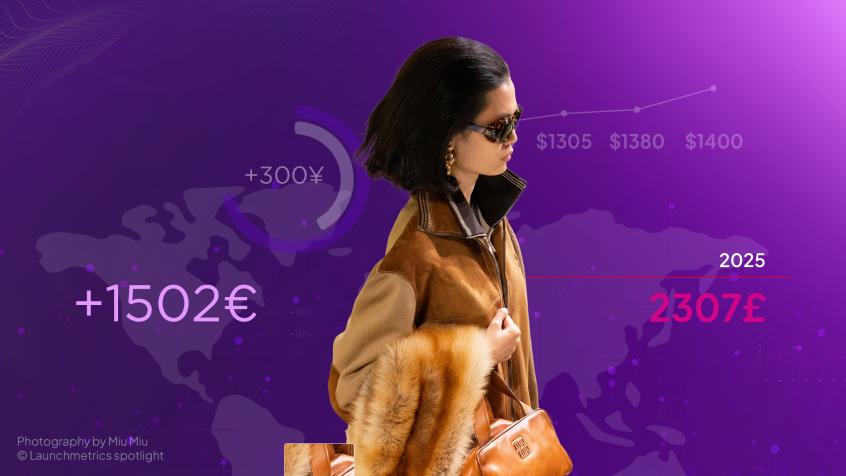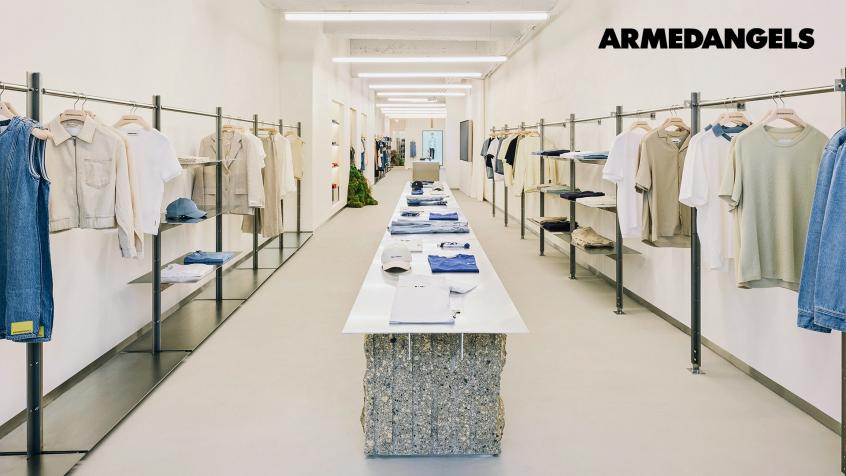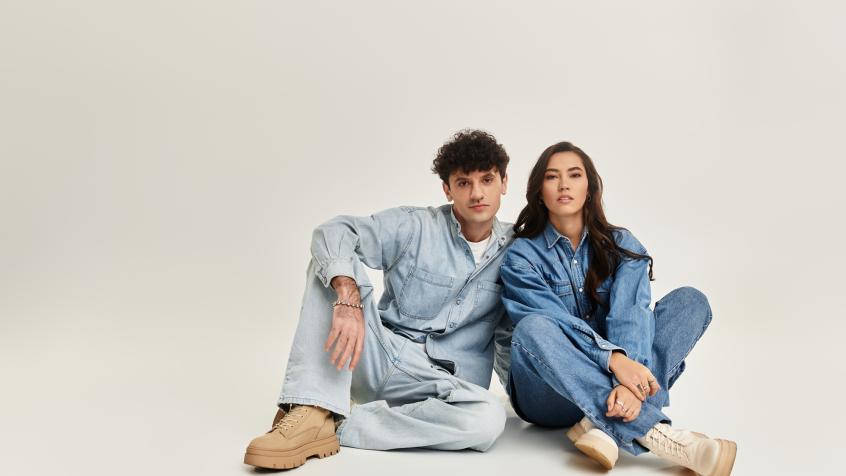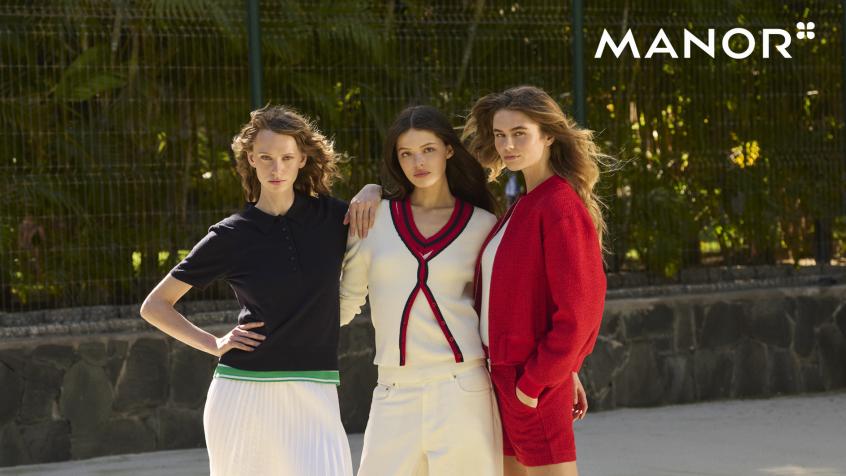Tackling the menswear industry
Is comfort here to stay?

Key takeaways
- Discount strategies differ between men and women’s apparel
- Tops, and more specifically t-shirts are the leading category within menswear
- Casual styles are still present in collections, with a difference within offers from the US versus the European market
Men’s apparel is booming and with a revenue of over $500 billion and an expected growth of 4.9% annually until 2026, the sector is only going to get bigger. Not only is revenue expected to show impressive growth, but there is also a forecasted volume growth of 9.5% in 2022, further proving that menswear is the sector to watch and to invest in. Young men are shopping more, and the men’s apparel market is continuously expanding, so how can you tackle menswear and be part of the sector’s growth?
The return of preppy fashion throughout recent runway shows coupled with the current global situation beg the question of what aspects of fashion are going to take the lead in the near future? Will casualwear maintain its standing, or will the “Ivy League” aesthetic with polos, oxford shirts and loafers take over the men’s fashion scene?
Want to know more about your competitors’ assortment, pricing, and discount strategies? Leading fashion retailers are using Retviews, the competitive intelligence platform and benchmarking solution for fashion, using real-time data, allowing you to take advantage of your competitor’s data and hit the market perfectly every time. Dive into our latest article to get an inside look into the type of data you can get, to optimize your brand’s collection and strategy with Retviews.
What's popular in menswear?l
Within menswear, several premium brands such as Tommy Hilfiger, Ralph Lauren, Calvin Klein and Hugo Boss stand out and have been vital in shaping the sector. So how do these premium brands currently take on menswear?

Retviews data indicates that tops are the evident leader within premium menswear, making up over 40% in each brand’s assortment, apart from Calvin Klein who has a larger focus on accessories, which include its undergarment assortment.
Within premium brands’ tops, t-shirts take the lead as the most prominent piece, with polos and sweatshirts following suit, indicating the everlasting popularity of casual wear. There is a small, however noteworthy difference between the European and United States market within leading tops’ categories, indicating that geographical factors could contribute to the tradeoff between casual wear and preppy dressing.

The competitive intelligence platform Retviews showcases the difference in assortments on an international level, within the same brands, allowing fashion retailers to optimize their assortment strategy within different markets.
Looking at Retviews data, although on average t-shirts are the most popular tops within the two markets, they are more prominent within premium brands’ European assortment than within the United States assortment. Polos however are more present in the US market, indicating that targeting menswear within the United States could imply an increased focus on the “old money aesthetic” that has made a comeback with millennials and Gen Z fashion consumers.
The casual phenomenon
Despite the increased popularity of American Collegiate “Ivy League” fashion, streetwear and casual styles have made a significant mark on the fashion industry, as a result of the global pandemic, where lockdowns led consumers to opt for loungewear. So where does premium brands’ menswear stand today?
Retviews data shows that within leading premium brands in the US market, casual assortments consisting of t-shirts, sweatshirts and sweatpants, currently make up an average of 20% of total assortments. Brands who historically are not streetwear-based have jumped on the growth of loungewear and maintain significant levels of the category in their assortment, indicating the continued value and presence of loungewear with regards to menswear.
Another popular aspect within menswear is the "smart-casual" bottom. Smart trousers with elastic or drawstring waistbands, relaxed fits, stretch fabrics and jogger style trousers are gaining popularity within the sector. The relaxed fit could be the ideal compromise, with consumers not wanting to give up comfort whilst going back to the office with a more tailored look. With the competitive intelligence platform for fashion, Retviews, your brand can access this and more real-time data daily, to pinpoint the most popular styles for your assortment.

How does discounting look in menswear?
Tackling menswear instigates the topic of how to discount the sector in comparison with womenswear, which also makes up a significant part of American premium brands Ralph Lauren, Tommy HIlfiger and Calvin Klein’s assortment, each brand’s womenswear assortment representing over 40% of the total assortment, as showcased by Retviews data.

Leading premium brands’ Calvin Klein and Ralph Lauren’s discount strategies in the menswear segment exhibit a stable amount of newly discounted items throughout each summer month and minimal new discounts within the fall season. There is a clear difference in comparison with womenswear, where discounts are lower throughout the same time period, with Calvin Klein’s womenswear assortment showcasing a surge in new discounts at the end of the summer months.

The difference in discounting strategies between women’s and men’s apparel is crucial in pinpointing the ideal way to tackle the menswear sector and differentiating your brand’s menswear and womenswear strategies.
The power of menswear
Experts state that menswear is going to continuously expand as seen in McKinsey's 2021 State of Fashion, thus tackling the segment with the right strategy is essential. Although trends like the collegiate “Ivy League” or “Preppy” trend have emerged once again, in part thanks to the recent Gossip Girl Reboot sparking interest from Gen Z as well as hit tv-show Sex Education, comfort still plays a vital role in menswear. How will these aspects evolve in the next seasons? Targeting menswear could mean more preppy-inspired pieces, coupled with the comfort factor and showcasing the trend in a more laid-back and relaxed manner. Factors to take into consideration would be targeting the sector within different geographical areas and differentiating your brand’s menswear strategy from women’s apparel.
Like major fashion retailers, analyze and compare your own offer to competitors’ using Retviews’ real-time data, save time benchmarking and take advantage of competitor’s data to optimize your collections and make better decisions.
Retviews
Related content









